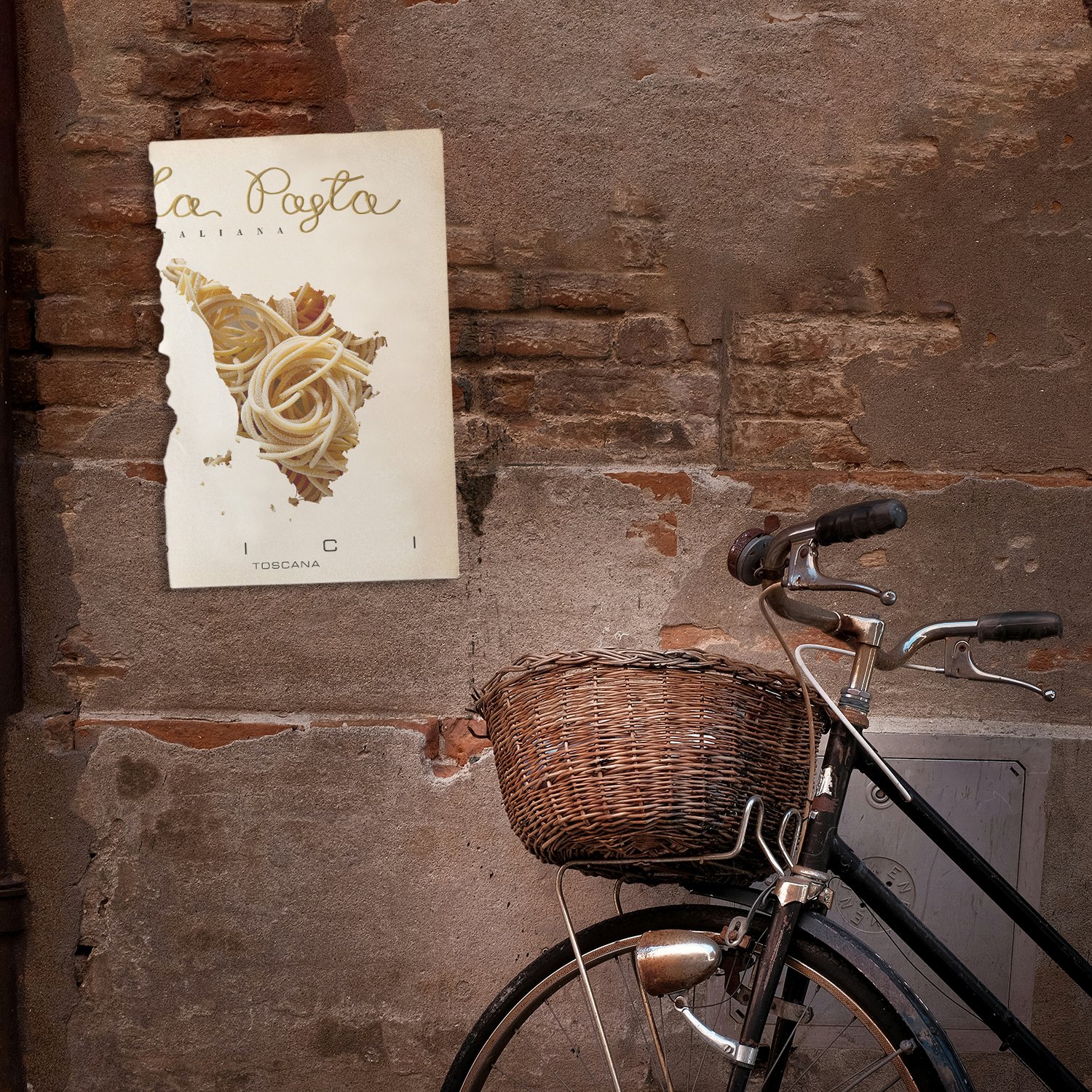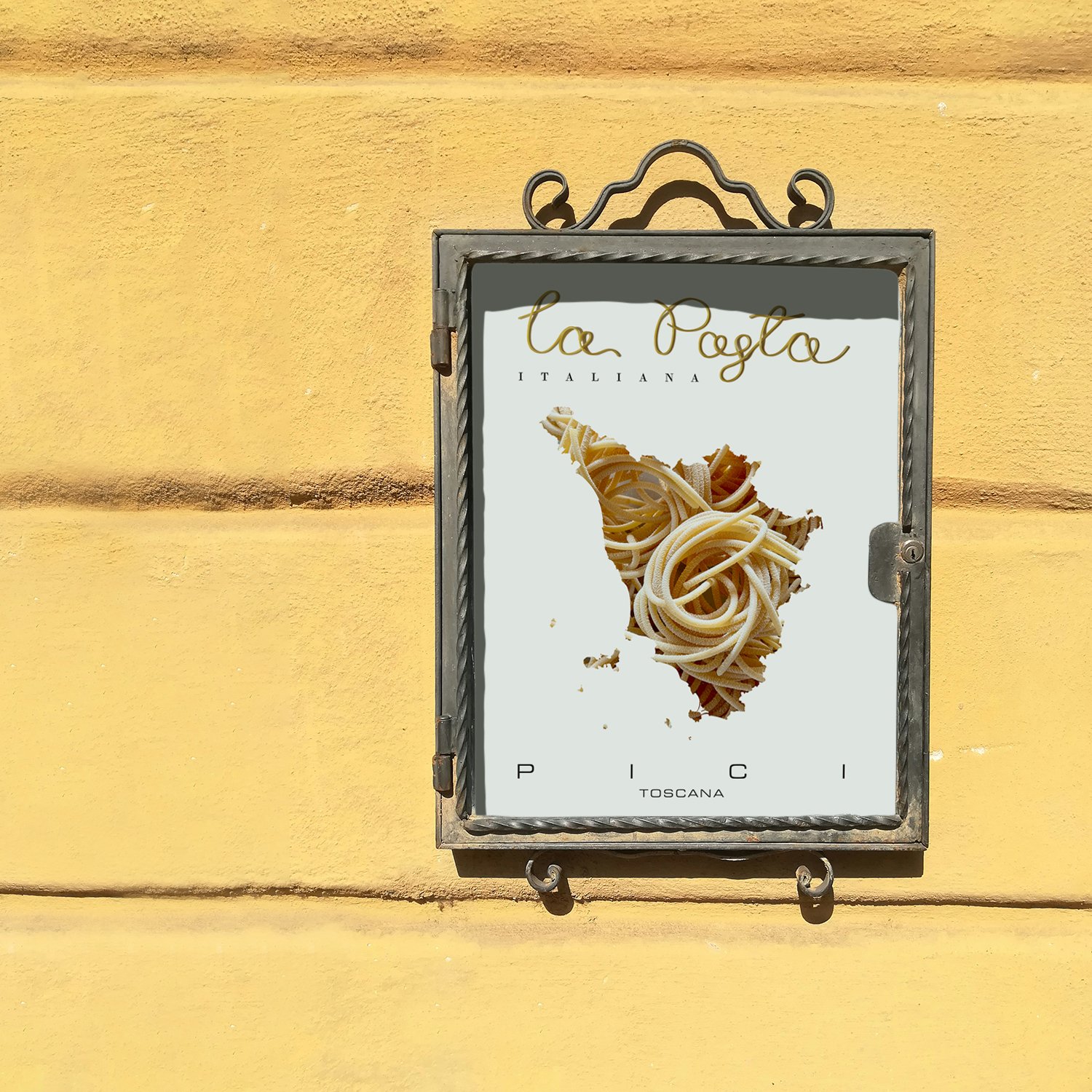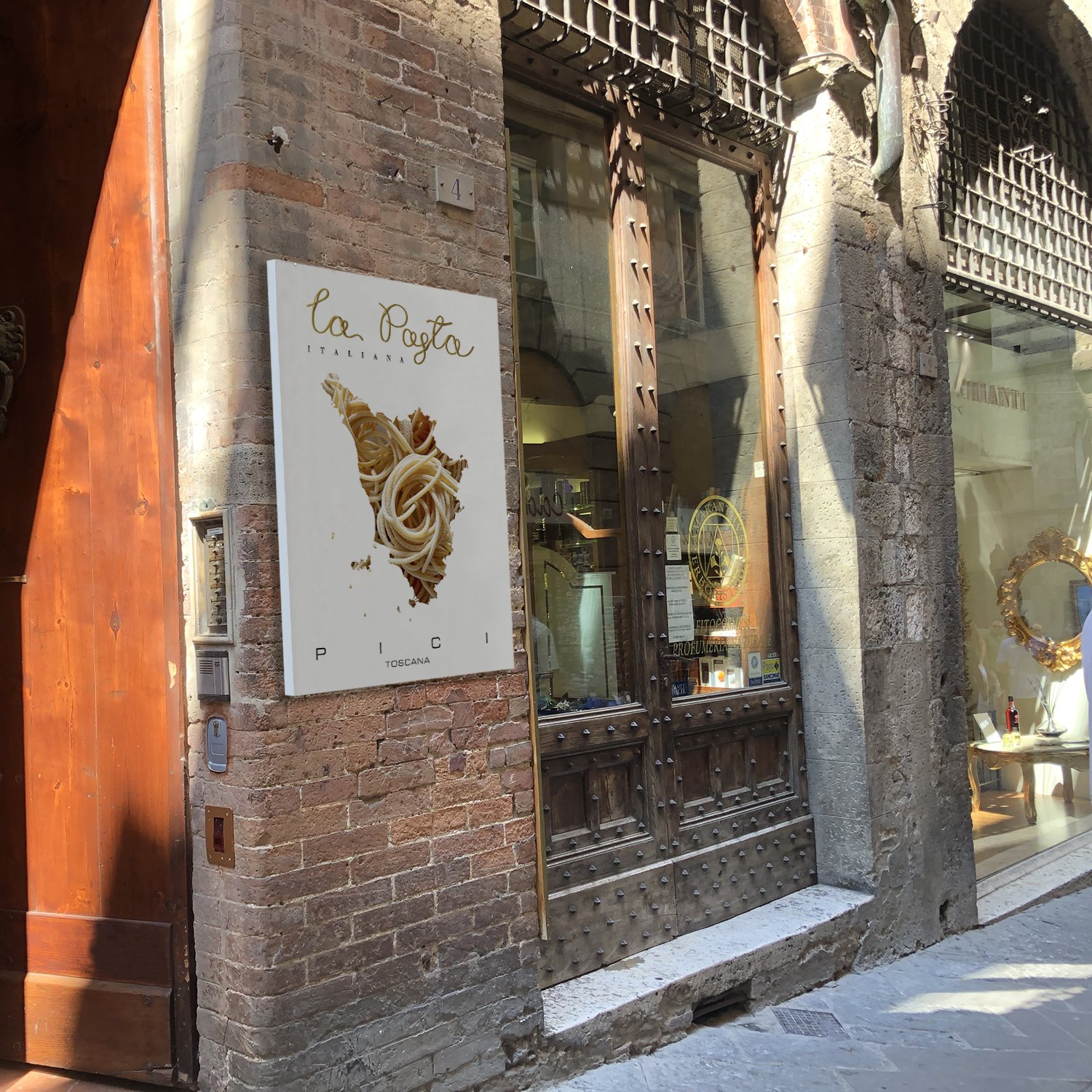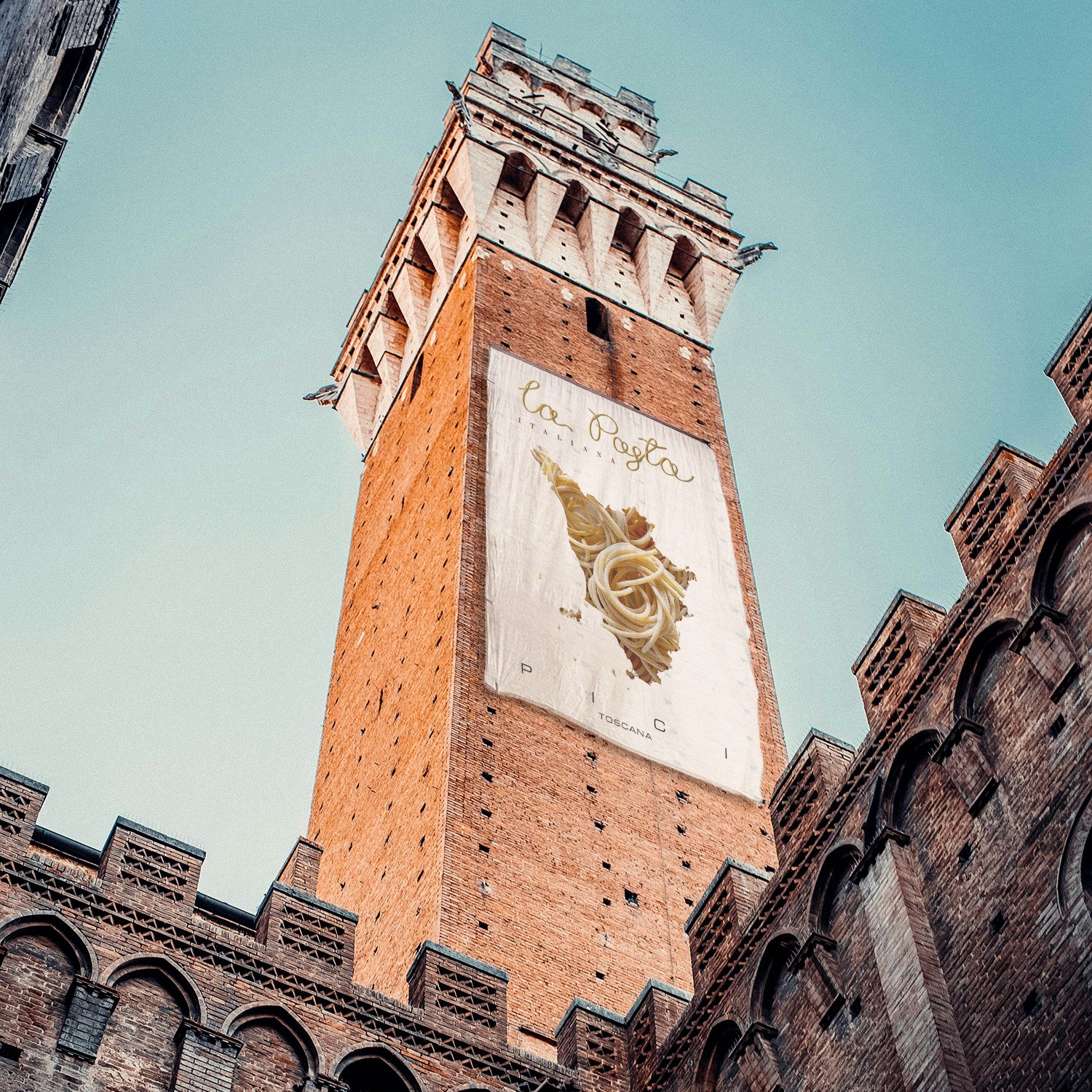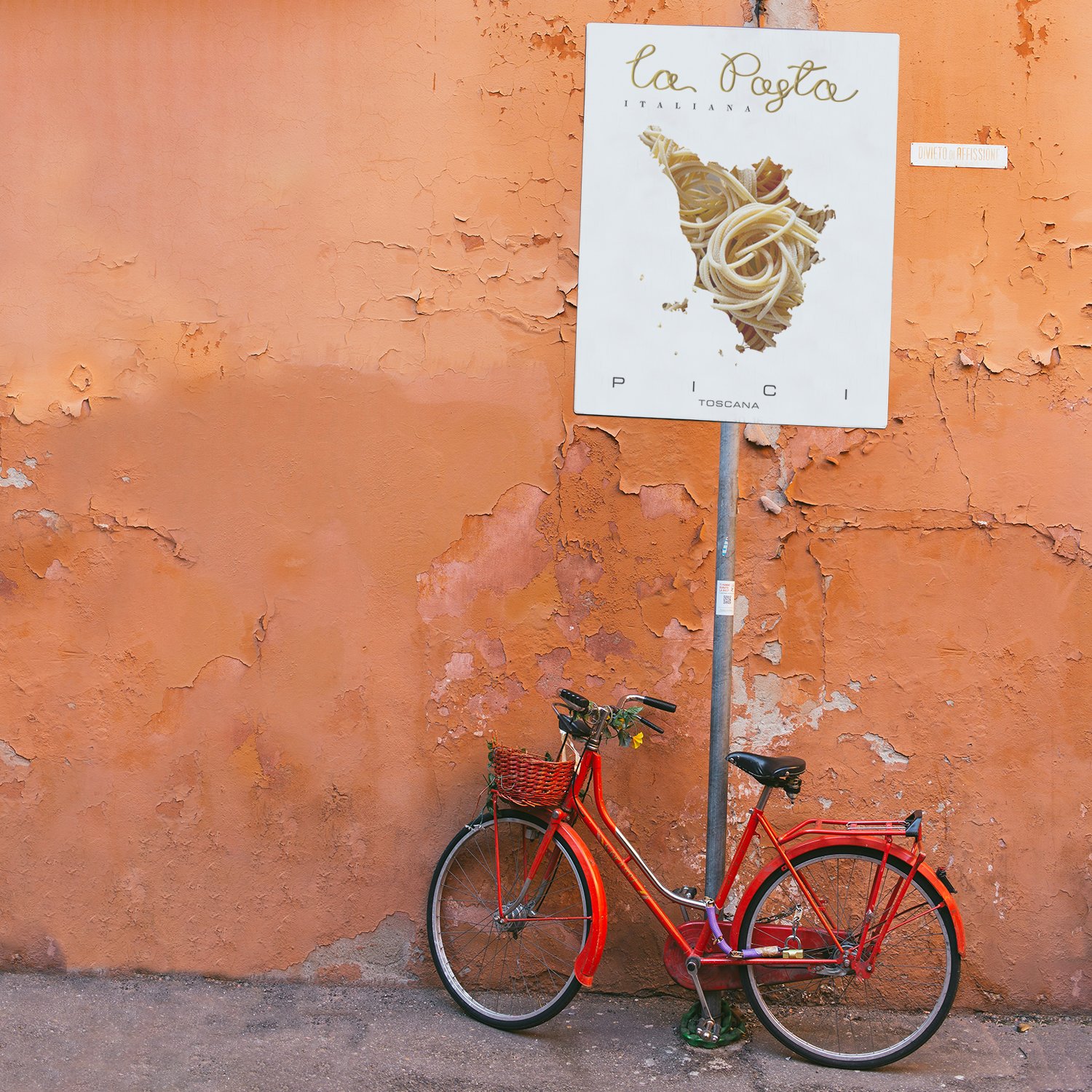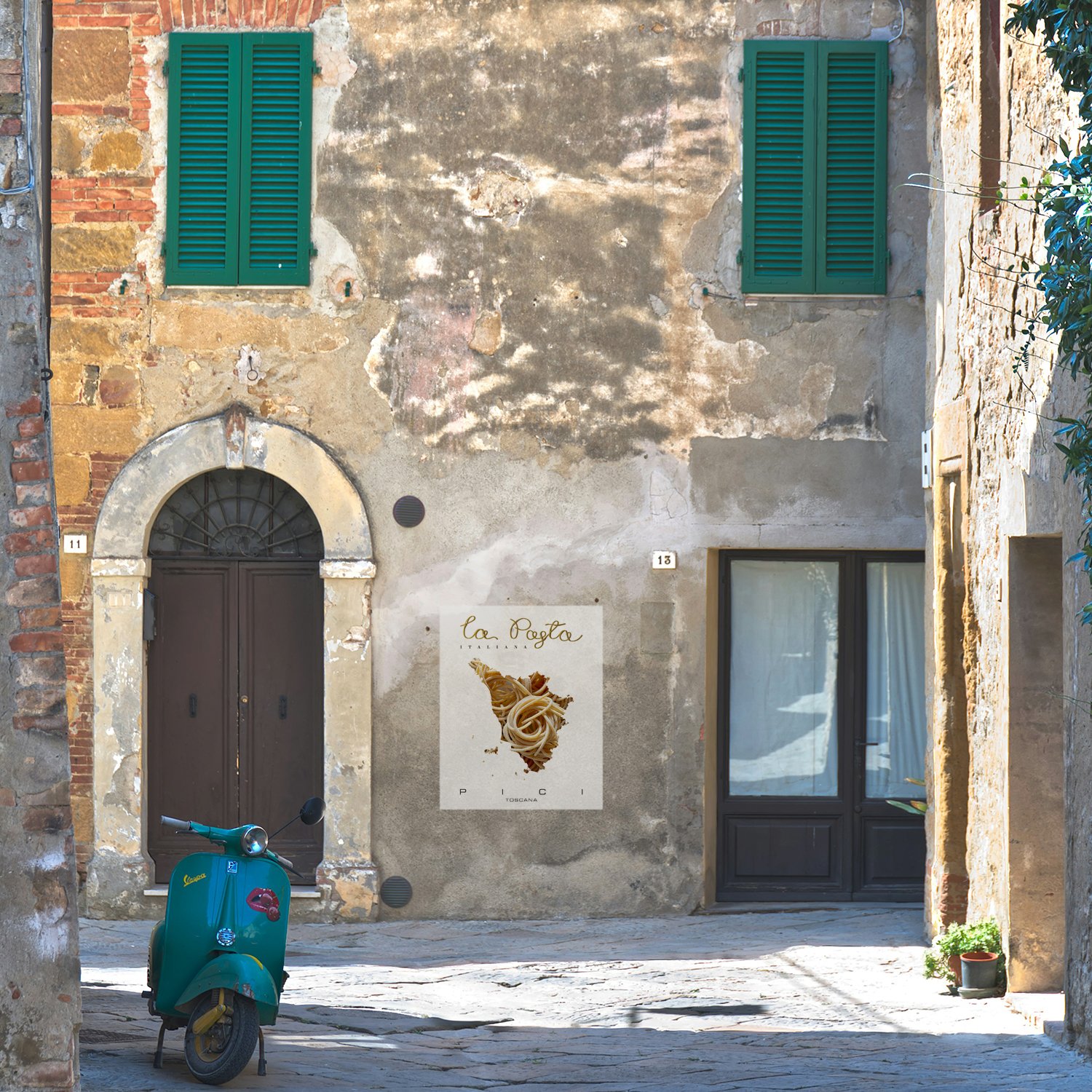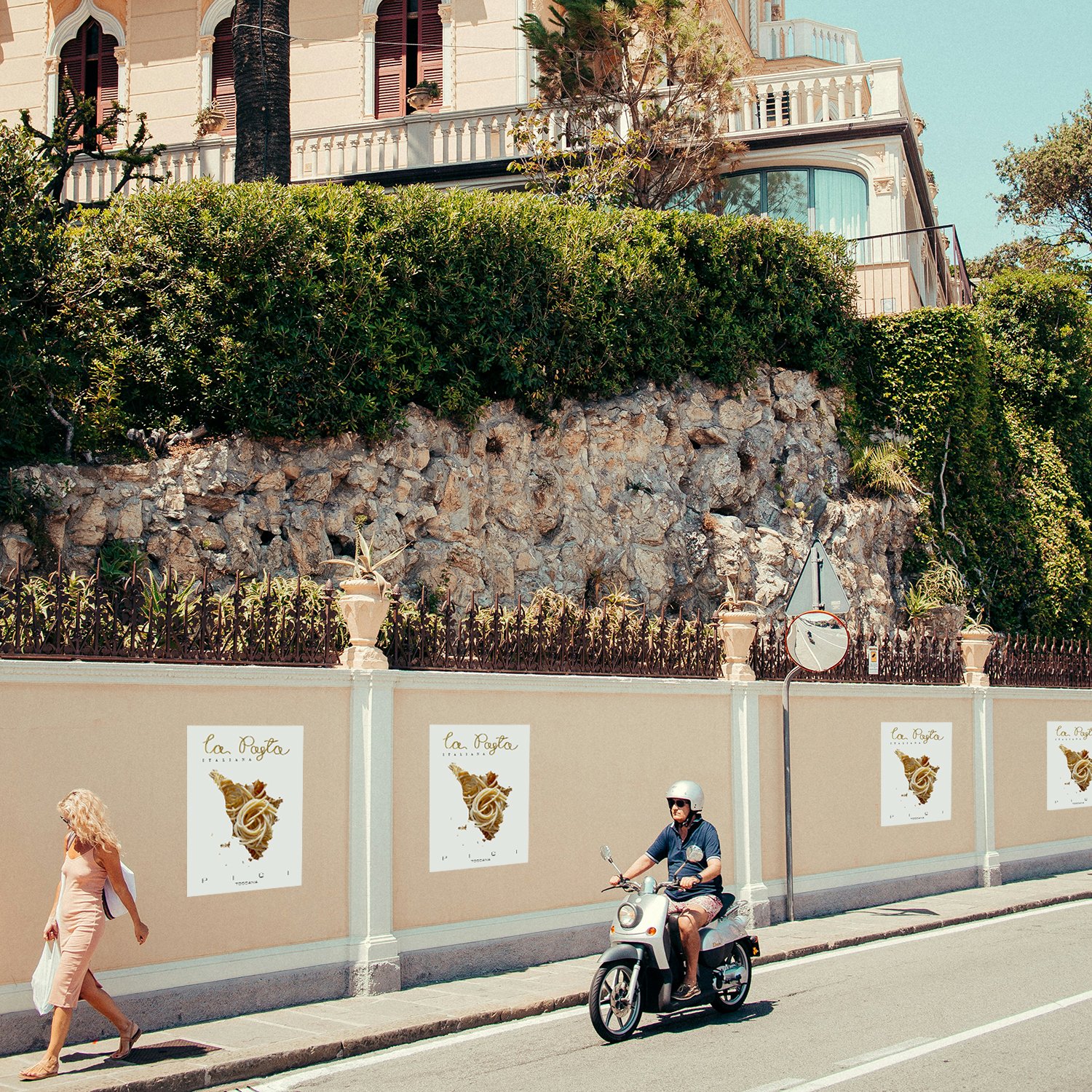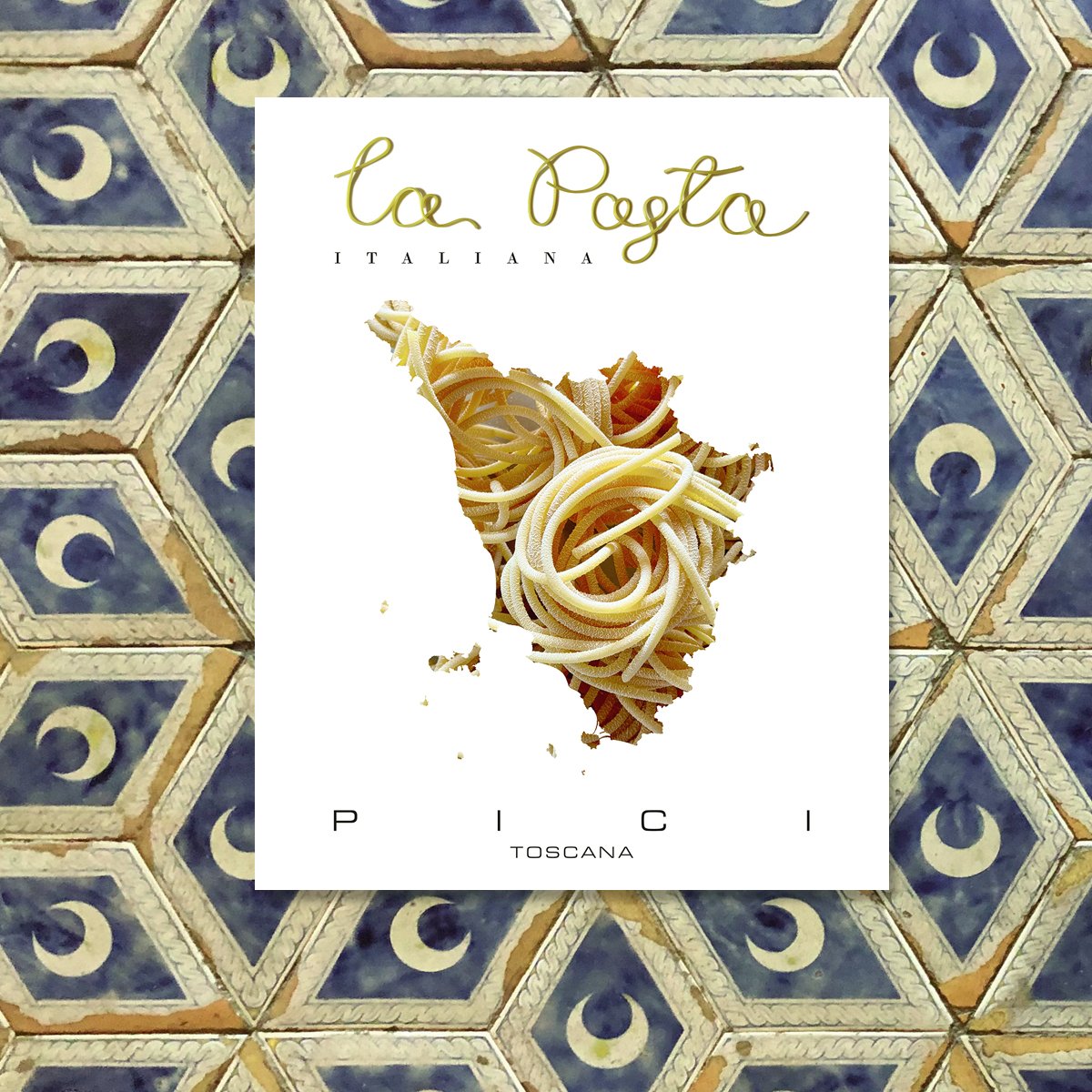Made traditionally with just flour, water and salt, Pici is considered part of the “cucina povera” the poor cuisine, due to its lack of egg. The Pici pasta looks like a long, thick spaghetti curled up in bundles like tagliatelle. This Tuscan specialty is sometimes called “Pici Senesi” as it is believed to originate in Siena. Its roots however, dates all the way back to ancient Etruscan times. A pasta similar to Pici has been found depicted on a mural in the Tomb of the Leopards in Tarquinia, an Etruscan burial chamber from 540-470 BCE (that is technically in Lazio, not in Tuscany). From Tarquinia in the Viterbo region the Pici spread throughout Tuscany.
The rustic Pici has always been considered to be a rural, dish eaten by peasants (as opposed to the royal Mafaldine from Campania). In Tuscany it is often served with Cacio e pepe but one of the most traditional dishes is Pici all’aglione a recipe from the area surrounding Siena. The sauce is made with aglione, (a regional type of garlic), tomato, olive oil and peperoncino. Another typical way of eating the pasta is Pici alle briciole made with thin slices of Tuscan bread, peperoncino, garlic, salt, grated Tuscan Pecorino and, of course, olive oil.

